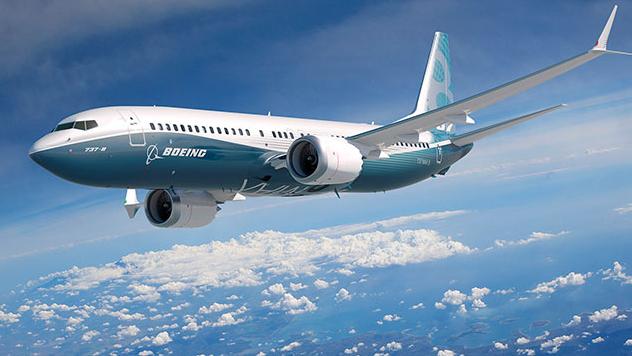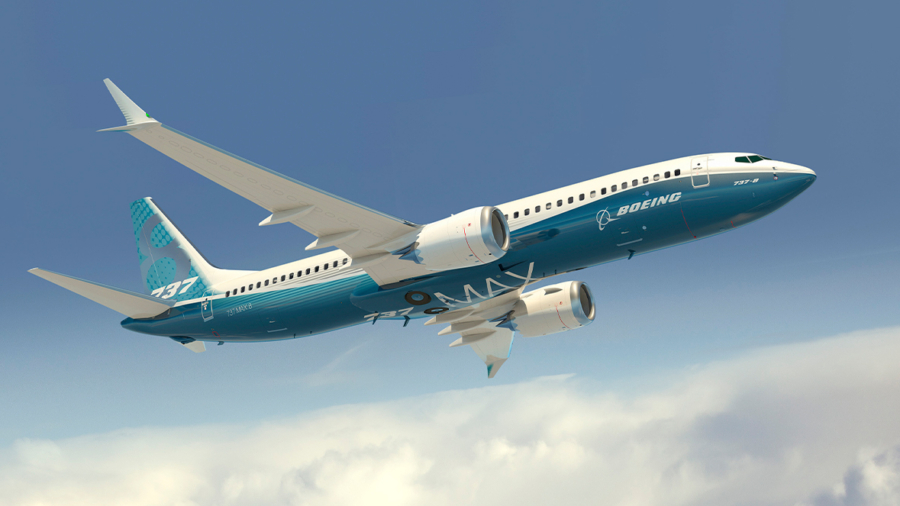The Boeing 737 airplanes were the newest jewel in the crown of American multinational corporation, The Boeing Company- a designer, manufacturer and seller of various forms of aircraft such as planes, rotorcraft, rockets, satellites, and missiles worldwide.
According to their website, “The 737 MAX was the fastest-selling airplane in Boeing history with about 5,000 orders from more than 100 customers worldwide.” Built with flexibility, reliability, and efficiency in mind, these single-aisle planes include modern sculpted sidewalls and window reveals, LED lighting to enhance the appearance of spaciousness and larger overhead storage bins.
This family of planes includes the Max 7, Max 8, Max 9, and Max 10, distinguishable by their varying sizes but it’s the 737 Max 8’s that have recently made the front page of headline news for all the worst reasons.
On October 29, 2018, a Boeing 737 Max 8 airplane belonging to Lion Air took off from Jakarta airport in Indonesia. Just 15 minutes into take-off, the plane crashed in the Java Sea, killing all 189 people on board.
This was the first crash reported for the 737 Max 8 which Lion Air began using in 2017. This particular plane had only been put into operation two months earlier and logged 69 hours of flight time over 19 trips. The commanding pilot had more than 6,000 hours of flying experience and the pilot second in command had over 5,000 hours of flying experience.
The 78-page preliminary report filed by Indonesian investigators detailed a struggle between the pilots on flight JT610 and an anti-stall system that forced the plan downward in response to inaccurate flight data. It also indicated that there had been problems with the plane in flights prior to its crash.
This anti-stall system is known as the Maneuvering Characteristics Augmentation System (MCAS) was recently added to the 737 Max 8 and 9 models. It is designed to pitch the plane’s nose down without pilot input when sensor data indicates a stall might occur.
A week after the crash Boeing advised airlines on how to respond to incorrect sensor data that causes the planes to nose down. In addition, the Federal Aviation Administration (FAA) ordered all flight manuals to receive updates to reflect this new education.
Strangely, Captain Dennis Tajer, spokesman for Allied Pilots Association, the union for American Airlines pilots said in an interview with Quartz that, “Before the crash, we were not provided any information on the MCAS or even its existence.” He also added an emphasis on these directives, calling them a “complex emergency situation.”
After the crash, Boeing began attempts to update the software for the MCAS while standing by their planes, saying in a statement that passengers and pilots, “have our assurance that the 737 Max is as safe as any airplane that has ever flown the skies.” Unfortunately, the victims’ families aren’t so easily dissuaded.
Three lawsuits emerged filed by relatives of victims on flight JT610. The first suit was filed in a state court in Chicago where Boeing is headquartered, by a relative who claimed the new “flight-control system” installed on the plan caused the crash. The second suit, also filed by a relative of one of the victims, states that the crash was caused by the defective anti-stall system and defective flight manual. The third suit filed resembles the first two.
Before Boeing could prepare to face their suits, another deadly crash occurred. Ethiopian Airlines flight 302 left the Addis Ababa Bole International Airport in Ethiopia on March 10th, 2019. Just six minutes after takeoff, the flight went down near the town of Bishoftu, killing all 157 people on board. While the details of the tragedy are still being investigated, the FAA has said that it identified similarities between this crash and the Lions Air Crash from last year.
While limited official information has been made available to the public regarding the similarities between these two crashes, a startling fifty countries have now grounded or banned the Boeing 737 Max 8 planes including the US, Canada, India, China and all of Europe. This all transpiring just four days after the crash of Ethiopian Airlines flight 302 leaving various news outlets to speculate and investigate what these similarities were themselves.
In a report published by the Jakarta Post, six similarities exist between Ethiopian Airlines flight 302 and Lion Air flight JT610 aside from the fact that both flights were with the same class of airplane.
The first similarity is that both flights issued a return to base request. Both pilots reported difficulties with the aircraft and requested a return to their airport of origin. The second occurrence both flights share is that flight control lost contact with them less than 15 minutes after takeoff.
The third symptom both flights experienced was an unstable vertical speed. Flight 302 began descending just 2 minutes into the flight before going up again briefly and then taking another descent. Its readings show a vertical speed of 2,000 feet per minute. Meanwhile, one of the more startling indications reported about flight JT610 was its drastic nosedive near the end of its journey- going down 4,850 feet in just 21 seconds, a statistic that is unheard of for a descent.
The fourth commonality is that both flights occurred in clear weather, which is very telling about the crash. It rules out the majority of external factors that might have occurred and with the third symptom being an inability to maintain altitude, it really narrows down the possible causes of the crash.
The fifth similarity is that he Boeing 737 Max 8’s are new planes and both planes were new deliveries to their respective airlines. Flight 302, labeled by serial number 62450 was only on its second flight ever. Flight JT610, registered as PK-LQP arrived just 5 days prior to its crash. It’s first flight ever, as we stated earlier in the article was just a couple months earlier.
The six and final observation both flights share is that their wreckage contained small pieces that were scattered. Like crime scenes, every detail around the incident must be closely examined. Plane crashes can occur for a variety of reasons and in a variety of places. For both crashes to exhibit similar type wreckage, indicates that their crashes likely occurred for similar reasons.
It appears likely that both planes went down due to internal systems malfunctions. The question remains, however, why the MCAS were installed without properly informing and educating the pilots who would be responsible for the devices as well as how to respond if the device malfunctioned.
In response to the mass groundings and speculations about the safety of the planes, Boeing has issued a statement saying that they would recommend the temporary global suspension of the entire 737 Max fleet. In their statement, a representative said, “We’re united with our airline customers, international regulators and government authorities in our efforts to support the most recent investigation, understand the facts of what happened and help prevent future tragedies.”

Katie Terrell Hanna
Katie Terrell Hanna is a professional freelance writer and consultant. She developed an interest in litigation journalism after an internship at the Office of State Attorney in the 15th Judicial Circuit of Palm Beach County, Florida. She is also a graduate of the Center for Pre-Law/Law Related Careers at the Gerald A. Williams Center for Pre-Law in West Palm Beach, Florida and was inducted into the Law Honor Society of her graduating class.

Get A Free Boeing 737 Max Case Review
If you or a loved one are one of the people who affected by Boeing 737 Max accident, you may be eligible for compensation.


